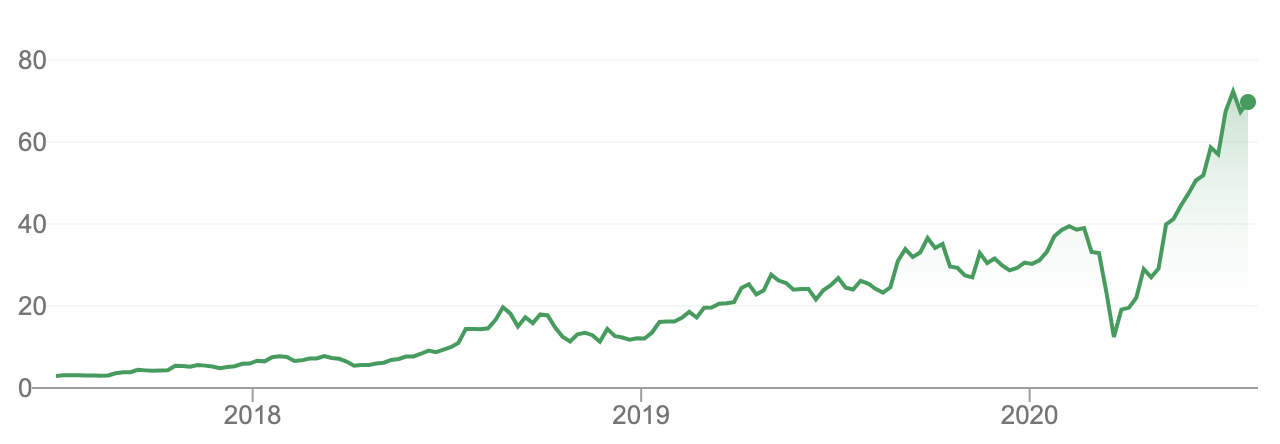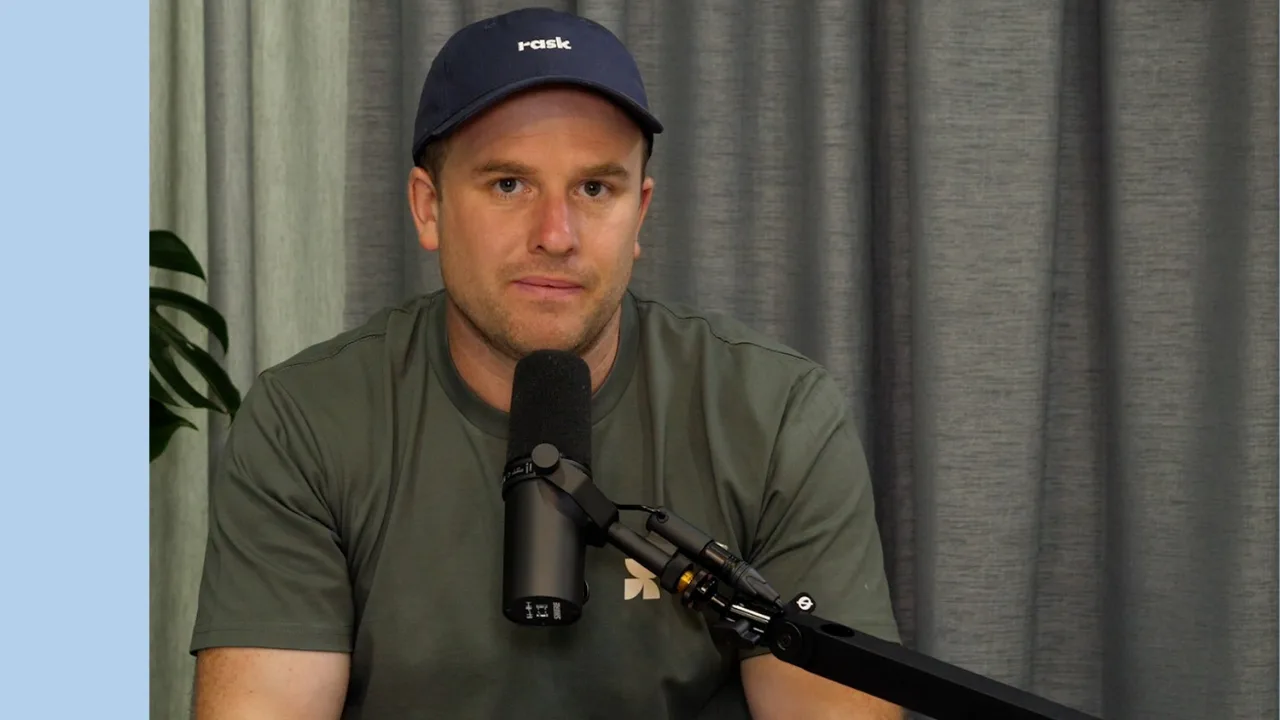Imagine buying in when the Afterpay Ltd (ASX: APT) share price was a measly $3. Or if you held Touchcorp shares, which were priced at $1.05 before it merged with Afterpay in 2017 and entitled you to 0.64 Afterpay shares.
Afterpay share price

Based on the Afterpay share price today of $69.65, a $10,000 investment in Afterpay shares at $3 would show a 2,200% return — in other words, the $10k investment would be worth around $220,000.
In case you’re wondering, I did not buy Afterpay shares. In fact, I’ve been quite critical of it — alongside all of the Buy Now, Pay Later lenders — for ethical, regulatory and risk reasons.
Still, you don’t need to own shares of a business to learn from its success and attempt to apply them yourself. So, together with my experience in researching and owning shares of some of the ASX’s more exciting companies, I thought I would share my three learnings from watching Afterpay shares.
1. Alignment matters.
I’m still surprised how many investors fail to keep tabs on the alignment of management of their company. Aside from day traders (who don’t care about the business behind a stock), everyone should know who is running their company and why they the CEO and management team is incentivised to add long term value for all shareholders.
Afterpay is still headed up by its co-founders, who are now very wealthy people. As my colleague and fellow analyst, Cathryn Goh, said in “Afterpay share price on watch – what you need to know“, the two founders recently sold down a heap of stock. About $125 million each.
Often, insider selling, as it’s known, can be seen as a ‘red flag’ by some investors. I see it more as an ‘orange’ or ‘amber flag’ because it’s more often a good pause for thought rather than a perfect sell signal.
For example, the Afterpay co-founders sold some of their shares twice in the past — the first was at a price of just $6.94. With shares now around $70 it tells you that following along blindly with what management is doing can be a mistake. Afterpay’s management still owns a significant number of shares in the business they run.
My final point on alignment is that sometimes, even though the alignment is incredibly important in small-cap investing, too many shares held by insiders or management can be a hindrance.
As Mark Tobin of Coffee Microcaps explained to me recently in an interview on our Investors Podcast series, too much insider ownership can have the opposite effect on management’s incentives — too much and they can end up running the company like a private business.
2. Customer acquisition you don’t pay for.
It’s said that a happy customer tells three friends but an unhappy customer tells 10.
As any small or medium business owner will tell you, word of mouth is a tremendous free form of marketing. If one of your customers tells another customer about your service then you have a cost to acquire that new customer, known as customer acquisition cost (CAC), of virtually zero.
Imagine you also have a product that gets more valuable when more people use it. If you do, that’s what we call a network effect.
Facebook Inc (NASDAQ: FB), which owns Instagram and WhatsApp amongst other things, is the poster child for this. When your friend is on Facebook, you want to be on it. The more people on the platform the better the experience becomes.
Afterpay is a little different but its network effect is even more tangible. For years, struggling and aspirational retail brands were looking for ways to get customers to spend more with them. Anything that could help, they’d take it.
One of the powerful things Afterpay did to reach its inflection point sooner — i.e. the point where it started to grow like wildfire in shopping centres and e-commerce stores throughout Australia — it required retailers to put a sticker on their window which would have the effect of saying: ‘shop here because you can use Afterpay’. Initially, that served the retailer very well. It served Afterpay better.
Over time, as more happy consumers jumped on the Afterpay platform, it’s customer acquisition cost, or CAC, which represents how much it costs to get a new paying user, dropped again and again and again. It was virtually free marketing!
The easiest way to get rich is to use other people’s money to do it. The easiest way to grow your brand is to get others to pay for marketing.
At its core, every successful business on earth has a simple rule to follow: pay less to acquire a customer than you get the customer to pay you.
3. Be the first-mover in consumer markets.
While layby, credit cards and short-term lending have been around for decades, Afterpay was the first genuine ‘Buy Now, Pay Later’ lender. It was the trendiest one at that.
By focusing on high-quality brands and marketers, typically at lower margins, it was able to tap into the crowds of fans backing some of the most iconic brands. By onboarding first-class retailers, it attracted competitors of those retailers who wanted to copy their success.
Zip Co Ltd (ASX: Z1P), Klarna, Humm by Flexigroup (ASX: FXL), Affirm, Sezzle (ASX: SZL) and Splitit Ltd (ASX: SPT) provide fungible/comparable products but in Australia, Afterpay is Afterpay.
In consumer products or services there’s often a groundswell that comes with being the first mover or ‘top dog’. While Zip is nipping at its heels in the BNPL market locally, Afterpay’s early success enabled it to launch into larger markets with relative ease.
What now?
To read our regular coverage of Afterpay shares you can click here. Bookmark the page and check in regularly.
While Afterpay has been a tremendous success for shareholders to own over the past 3-5 years, it’s not one I’m invested in. And still, after all of the growth it’s experienced, I can’t bring myself to own it.
I’m happy to focus my time and that of my team on other ASX growth stocks, with asymmetric upside.








